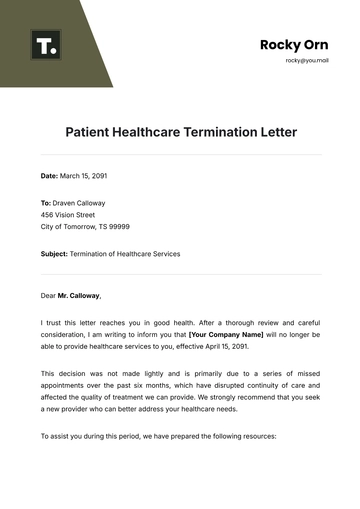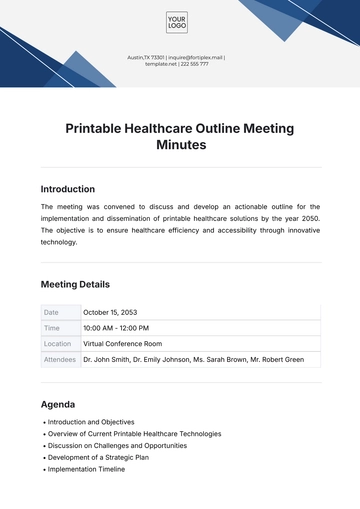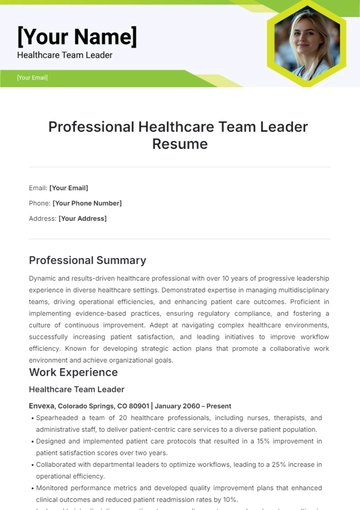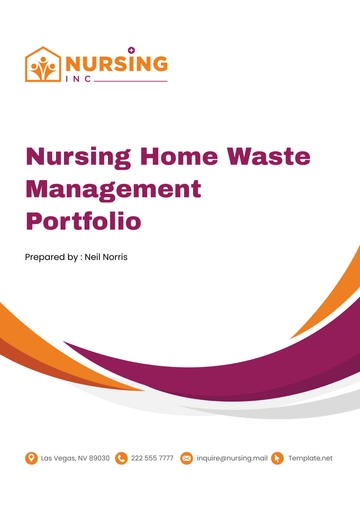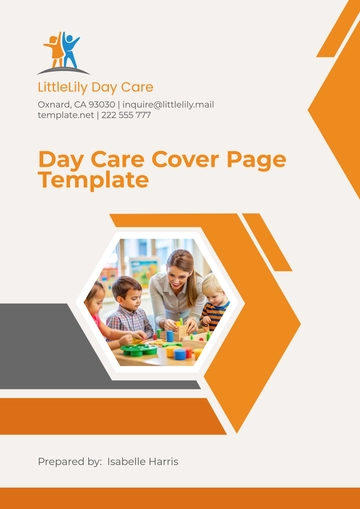Free Nursing Home Cultural Competency Training Guide for Nursing Home Staff
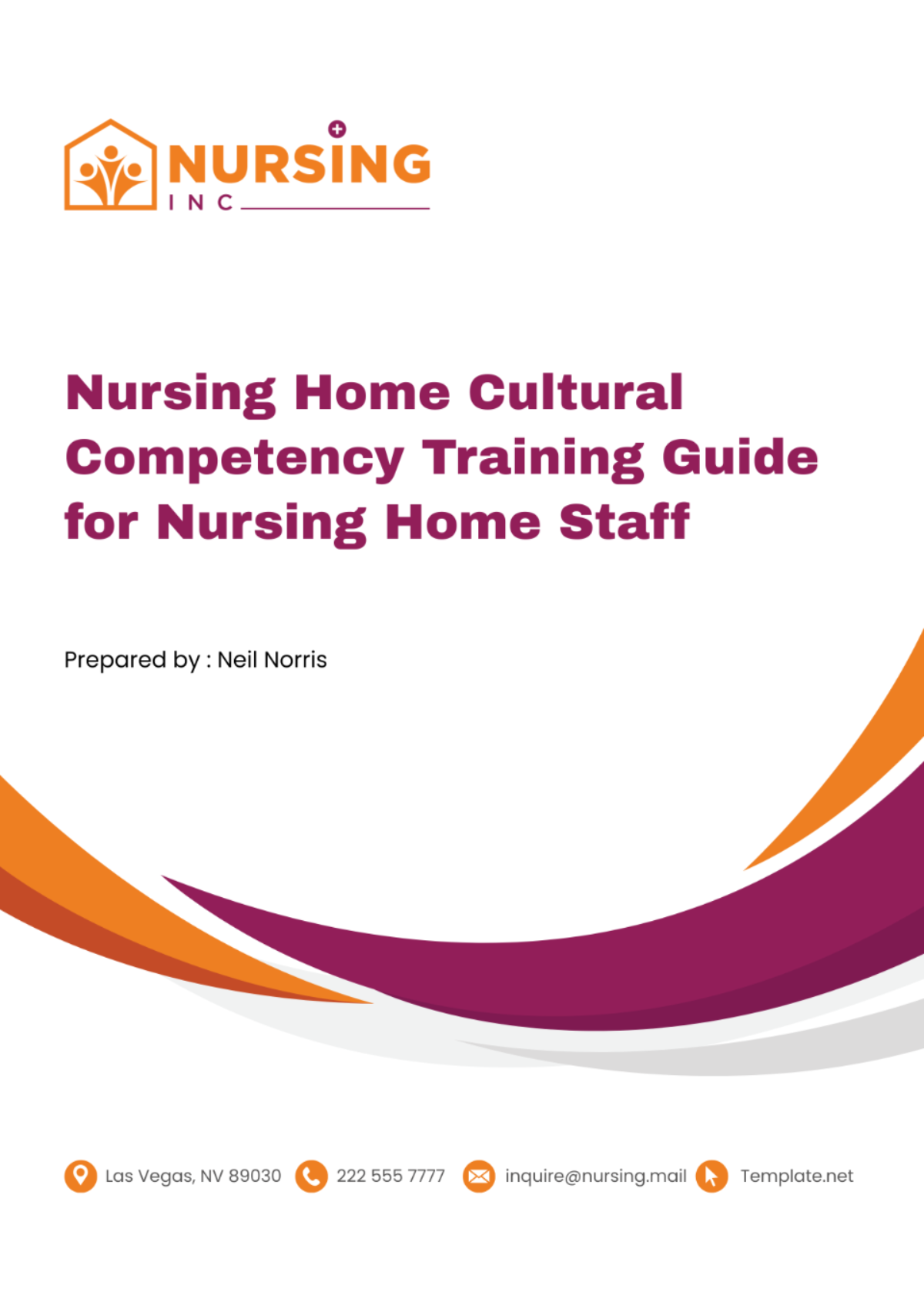
I. Purpose
The purpose of this Cultural Competency Training Guide is to equip our nursing home staff with the knowledge and skills necessary to provide culturally sensitive and competent care to our diverse community of residents and their families. Recognizing and respecting the varied cultural backgrounds, beliefs, and practices of those we serve is essential to creating an inclusive, supportive, and respectful environment. Through this guide, we aim to foster understanding, enhance communication, and promote a high standard of personalized care that acknowledges and celebrates cultural diversity.
II. Understanding Cultural Competency
Cultural competency in a nursing home setting is crucial for ensuring that all residents receive care that is respectful of their cultural beliefs, values, and practices. It involves understanding, appreciating, and integrating these diverse cultural factors into daily care and interactions. The importance of cultural competency cannot be overstated, as it directly impacts the quality of care, resident satisfaction, and the overall wellbeing of those in our care.
Key Concepts
Cultural Awareness: Recognizing the cultural differences and similarities between people without assigning them a value.
Cultural Sensitivity: Being aware that cultural differences and similarities exist and have an effect on values, learning, and behavior.
Cultural Competence: The ability of healthcare providers to meet the cultural, social, and linguistic needs of their patients.
Cultural Humility: Maintaining an interpersonal stance that is other-oriented in relation to aspects of cultural identity that are most important to the person.
III. Self-Awareness and Cultural Reflection
Cultivating self-awareness and engaging in cultural reflection are foundational steps in becoming culturally competent. It's important for staff to recognize their own cultural backgrounds, biases, and how these can influence their interactions with residents and their families. Through self-reflection, we can better understand our own perspectives and how they shape our approach to care.
Cultural Autobiography: Write a personal narrative that explores your cultural background, significant events, and how your culture has shaped your views and behaviors.
Cultural Identity Map: Create a visual map that outlines the various aspects of your cultural identity, including ethnicity, nationality, language, religion, and traditions.
Bias Awareness Reflection: Reflect on and list any biases or stereotypes you may hold. Consider how these might impact your interactions with residents and colleagues.
Cultural Exchange Discussions: Participate in group discussions with colleagues from different cultural backgrounds. Share experiences and perspectives to foster mutual understanding and respect.
IV. Core Principles of Cultural Competency
A. Respect and Sensitivity
Respect and sensitivity are the bedrock upon which cultural competency is built. They require acknowledging and valuing the cultural differences and personal histories of residents and their families. By approaching every interaction with respect and sensitivity, we affirm the dignity of each individual, fostering a climate of trust and openness. This principle guides us to meet each person’s needs in a manner that is respectful of and responsive to their cultural identities.
B. Effective Communication
Effective communication transcends linguistic barriers, involving non-verbal cues, cultural idioms, and the ability to listen actively. It's essential for understanding the unique needs and preferences of our residents. By adopting communication practices that consider cultural nuances, we can improve our caregiving approach, ensuring that residents feel heard, understood, and valued.
Active Listening: Focus fully on the speaker, understand their message, respond thoughtfully, and retain the information.
Cultural Idioms of Distress: Learn and recognize expressions of discomfort or distress that are specific to different cultures.
Non-Verbal Cues: Pay attention to body language, eye contact, and gestures, which can vary significantly across cultures.
Clarification and Confirmation: Repeat back what you've heard and ask for clarification to ensure understanding.
C. Person-Centered Care
Person-centered care places the resident’s personal values, preferences, and needs at the forefront of all care decisions. It involves seeing beyond one’s medical conditions to honor their whole being, including their cultural background, in the care process.
Incorporate Cultural Preferences: Make an effort to incorporate cultural preferences into daily care routines and decisions.
Flexible Policies: Adapt policies and practices to accommodate cultural practices and religious observances whenever possible.
Individualized Care Plans: Develop care plans that are tailored to reflect each resident's cultural identity, preferences, and needs.
V. Cultural Competency Skills
A. Building Rapport
Building rapport with residents and families from diverse cultural backgrounds is crucial for establishing a trusting and supportive care relationship. It’s about making a personal connection that recognizes and respects cultural identities.
Cultural Greetings: Use appropriate greetings that show respect for the resident’s cultural background.
Personal Interest: Show genuine interest in the resident’s life story, cultural background, and personal preferences.
Cultural Competency Training: Regularly participate in cultural competency training to enhance understanding and sensitivity.
B. Interpreting Cultural Expressions
Cultural expressions of health, illness, and well-being can vary widely and have different meanings across cultures. Understanding these expressions is crucial for effective communication and care.
Expression | Possible Meaning |
Avoiding eye contact | Respect, discomfort, or distrust |
Silence | Thoughtfulness, disagreement, or respect |
Use of metaphors | A way to describe symptoms or emotional states |
Hand gestures | Can indicate emphasis, greeting, or distress |
C. Language and Communication Skills
Effective language and communication skills are fundamental to cultural competency. They enable us to bridge cultural gaps, enhance understanding, and ensure that care is delivered in a manner that is both respectful and effective.
Multilingual Signs and Materials: Use signs and informational materials in multiple languages common among the resident population.
Translation Services: Utilize professional translation services for critical communications to ensure accuracy and understanding.
Cultural Mediators: Employ cultural mediators who can navigate cultural nuances and assist in communicating effectively with residents and families.
VI. Addressing Cultural Diversity in Care Planning
A. Inclusive Care Planning
Inclusive care planning is vital to ensure that each resident's care plan reflects their cultural preferences, beliefs, and needs. This approach promotes dignity, respect, and optimal care outcomes. It involves active participation from the resident and, if appropriate, their family, in all aspects of care planning.
Cultural Assessment: Conduct a cultural assessment as part of the care planning process to identify specific cultural needs and preferences.
Collaborative Goals Setting: Work with the resident and their family to set care goals that are meaningful and respectful of the resident’s cultural background.
Flexible Policies: Adapt care routines and policies to accommodate cultural practices whenever possible, such as dietary restrictions, prayer times, and traditional healing practices.
Ongoing Dialogue: Maintain an ongoing dialogue with residents and families to ensure that care plans remain responsive to changing needs and preferences.
B. Religious and Spiritual Considerations in Care
Addressing religious and spiritual needs is an integral component of comprehensive care planning. For many residents, these aspects are crucial to their sense of well-being and comfort, especially in a nursing home setting.
Spiritual Assessment: Include a spiritual assessment as part of the overall evaluation of the resident’s needs.
Respect for Rituals and Practices: Ensure that residents can observe their religious rituals and practices, such as prayer times, dietary rules, and observance of holy days.
Access to Spiritual Support: Provide access to spiritual support services, such as chaplaincy or pastoral care, especially for residents facing end-of-life decisions or those who request it.
Education and Training: Offer education and training for staff on the religious and spiritual needs that may be present within the resident population to promote understanding and respect.
VII. Overcoming Cultural Barriers in Healthcare
A. Identifying and Overcoming Barriers
Cultural barriers can impede effective communication, misunderstanding, and even conflict. Identifying and addressing these barriers is crucial for providing equitable and respectful care.
Common Cultural Barrier | Strategy for Addressing |
Language Differences | Use of professional interpreters and translation services. |
Differing Health Beliefs | Provide culturally sensitive education and information. |
Variations in Communication Styles | Train staff in culturally appropriate communication techniques. |
Mistrust of Healthcare Providers | Build trust through consistent, respectful, and empathetic care. |
B. Conflict Resolution
When cultural misunderstandings or disagreements arise, effective conflict resolution strategies are essential to restore harmony and trust.
Active Listening: Ensure that all parties feel heard by practicing active listening, which helps in understanding the underlying issues.
Seek Common Ground: Focus on finding common ground or mutual goals that respect cultural values and beliefs.
Cultural Mediation: Consider involving a cultural mediator who can offer insights into cultural norms and assist in navigating the conflict.
Educate and Advocate: Use conflicts as opportunities to educate about cultural competency and advocate for policies and practices that support a culturally inclusive environment.
VIII. Legal and Ethical Considerations
Legal and ethical considerations form the backbone of cultural competency in healthcare, ensuring that services are delivered in a manner that respects individual rights and adheres to professional standards. In the United States, several laws and regulations highlight the importance of cultural competency and mandate its incorporation into healthcare practices to protect the rights of individuals from diverse cultural backgrounds.
Civil Rights Act of 1964, Title VI: Prohibits discrimination on the basis of race, color, or national origin in programs and activities receiving federal financial assistance.
Americans with Disabilities Act (ADA): Protects individuals with disabilities from discrimination and ensures equal access to healthcare services.
Health Insurance Portability and Accountability Act (HIPAA): Includes provisions to ensure the protection of private health information, including information related to a person's cultural identity and background.
Patient Protection and Affordable Care Act (ACA): Enhances access to healthcare services for diverse populations and includes provisions for improving cultural competency among healthcare providers.
IX. Implementing Cultural Competency
Successfully implementing cultural competency within a nursing home requires a structured approach to training and education, alongside practices that promote an inclusive environment.
Training/Education | Frequency | Duration |
Cultural Competency Basics | Annually | 2 hours |
Communication Across Cultures | Biannually | 1.5 hours |
Legal and Ethical Considerations | Annually | 1 hour |
Addressing Cultural Barriers | Annually | 1.5 hours |
Cultural Celebrations: Recognize and celebrate cultural holidays and events significant to the residents and staff.
Diverse Hiring Practices: Strive for a diverse workforce that reflects the community served by the nursing home.
Language Access Services: Provide access to interpreters and translation services to facilitate communication.
Culturally Diverse Menus: Offer meal options that reflect the cultural preferences of the residents.
Feedback Mechanisms: Implement mechanisms for residents and staff to provide feedback on cultural competency initiatives and suggest improvements.
X. Resources and Support
To support the ongoing development of cultural competency among nursing home staff, a variety of resources are available. These resources can provide additional information, strategies, and support for implementing effective cultural competency practices.
National Center for Cultural Competence (NCCC)
Office of Minority Health (OMH)
DiversityRx
Cross-Cultural Health Care Program (CCHCP)
- 100% Customizable, free editor
- Access 1 Million+ Templates, photo’s & graphics
- Download or share as a template
- Click and replace photos, graphics, text, backgrounds
- Resize, crop, AI write & more
- Access advanced editor
Discover the Nursing Home Cultural Competency Training Guide for Nursing Home Staff Template at Template.net, your essential resource for fostering an inclusive care environment. This editable and customizable template offers detailed guidance on cultural competency, modifiable in our AI Editor tool, aimed at enhancing understanding and communication between staff and the diverse communities they serve.








